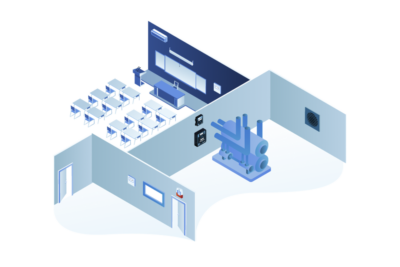School / Boiler Rooms
Continuous monitoring of natural gas, carbon monoxide and carbon dioxide in schools
Potential gas hazards in a school include natural gas, carbon monoxide and carbon dioxide. Natural gas sources include fuel burning equipment or appliances such as an oil or gas furnace, water heaters and gas stoves or ovens. These sources can be found in the furnace room, science labs and kitchens where equipment can potentially leak natural gas. A leak not only wastes expensive fuel but could result in an explosion causing loss of life and structural damage.
When natural gas doesn’t combust properly, carbon monoxide is produced. If equipment is not properly maintained, malfunctions, wears out or if something just goes wrong, CO levels can quickly rise to hazardous level as the gas easily travels around through the air and can migrate to other areas of the building through vents, ducts and other openings.
Another potential gas hazard is the build up of carbon dioxide. CO2 displaces oxygen. Every person exhales CO2 and levels can become unhealthy quickly without proper ventilation. The health risk increases with crowded classrooms, indoor gym classes and large gatherings in auditoriums.

KEY CONSIDERATIONS
- Multiple gas hazards throughout the facility require several types of gas detectors to protect the health and safety of students and faculty
- Natural gas is highly flammable and made of mostly methane. The methane gas detector should be mounted on or near the ceiling as methane gas is lighter than air and will concentrate in high places.
- Audible / visual devices should be mounted in centralized locations where they are easily seen and heard
TARGET GASES
- Natural Gas / Methane (CH4)
- Carbon Monoxide (CO)
- Carbon Dioxide (CO2)

